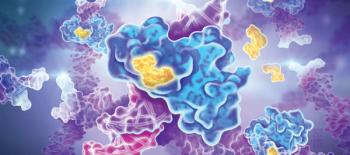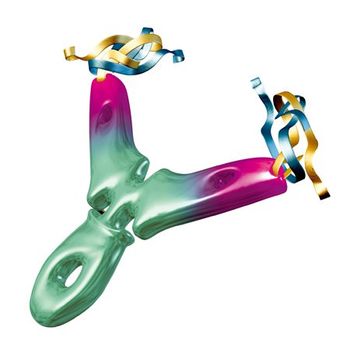
Robot-assisted and open radical surgeries for prostate cancer have similar outcomes for patients at 3 months, according to clinical trial results.

Your AI-Trained Oncology Knowledge Connection!


Robot-assisted and open radical surgeries for prostate cancer have similar outcomes for patients at 3 months, according to clinical trial results.

Metastatic prostate cancer is more strongly associated than localized disease with germline mutations in DNA repair genes like BRCA1 and BRCA2.

Canadian researchers have tentatively identified urine protein signatures that appear to differentiate aggressive from low-risk prostate tumors.

A randomized phase III trial found that a hypofractionated radiotherapy regimen was not superior to, but generally equivalent to a conventional radiotherapy scheme in men with localized prostate cancer.

A database analysis showed that the addition of external beam radiotherapy to ADT significantly improves overall survival in men with metastatic prostate cancer.

Higher than average PSA levels in middle age may be predictive of a higher risk of lethal prostate cancer later in life.

In this peer-to-peer discussion, Dr. Loeb and Dr. Choyke discuss new developments in active surveillance for prostate cancer.

Experimental, minimally invasive “liquid biopsy” blood tests might soon help to personalize prostate cancer treatment by predicting androgen resistance and survival benefits from particular treatments.

Use of multiparametric MRI could allow a significant portion of men with elevated PSA levels to avoid undergoing a biopsy without missing clinically significant prostate cancers.

The use of ADT along with modern dose-escalated RT does not improve survival vs RT alone in men with favorable intermediate-risk prostate cancer.

A new study published in Nature Communications is suggesting that castration-resistant prostate cancer has particular metabolic characteristics that may open new possibilities for treatment.

We will review how PARP inhibitors function as a class, review the molecular features that sensitize cancer cells to this therapy, and discuss the data supporting its potential for patients with prostate cancer.

Having said that, PARP inhibition is one of the most promising approaches for “precision therapy” so far. Within the next few years and with the help of ongoing clinical trials, we should have a better understanding of whether or not the high expectations raised will be translated into clinical reality.

Only one in three men with prostate cancer received care in accordance with guidelines for active surveillance, according to a new study conducted in Michigan.

Declines in the rates of cigarette smoking in several states mirrored declines in prostate cancer deaths between 1999 and 2010, according to a new epidemiologic analysis.

Prostate cancer patients who kept up a moderate to high level of physical activity had better survival prognoses compared with their more sedentary counterparts.

Here we review current therapies for nonmetastatic CRPC and discuss the recently completed and ongoing trials for this emerging disease state.

Men with high-risk nonmetastatic CRPC should if possible be enrolled in a clinical trial and that patients with low-risk disease can be safely observed.

Combination therapy with bicalutamide and everolimus resulted in promising responses in a phase II trial of patients with castration-resistant prostate cancer, though a substantial proportion of patients experienced everolimus-related toxicities.

Twelve US lawmakers have asked the Obama administration to scrutinize the pricing of the prostate cancer agent enzalutamide and to consider licensing its generic production.

Men who receive pharmacologic androgen deprivation therapy as part of their treatment for prostate cancer may be at higher risk for depression.

Results of a phase II randomized trial found that combining a short course of androgen deprivation therapy with bevacizumab improved relapse-free survival in men with hormone-sensitive prostate cancer.

Researchers at UCLA are reporting that prostate adenocarcinoma and neuroendocrine prostate cancer can arise from a common epithelial clone.

A study published in Nature Medicine reports that suppressing the nuclear receptor protein ROR-γ with small-molecule compounds may reduce AR levels in CRPC and stop tumor growth.

Using simulation modeling, researchers found that PSA screening can be cost-effective if men with low-risk prostate cancer do not undergo treatment and if clinicians use restrictive criteria to make a decision to biopsy.